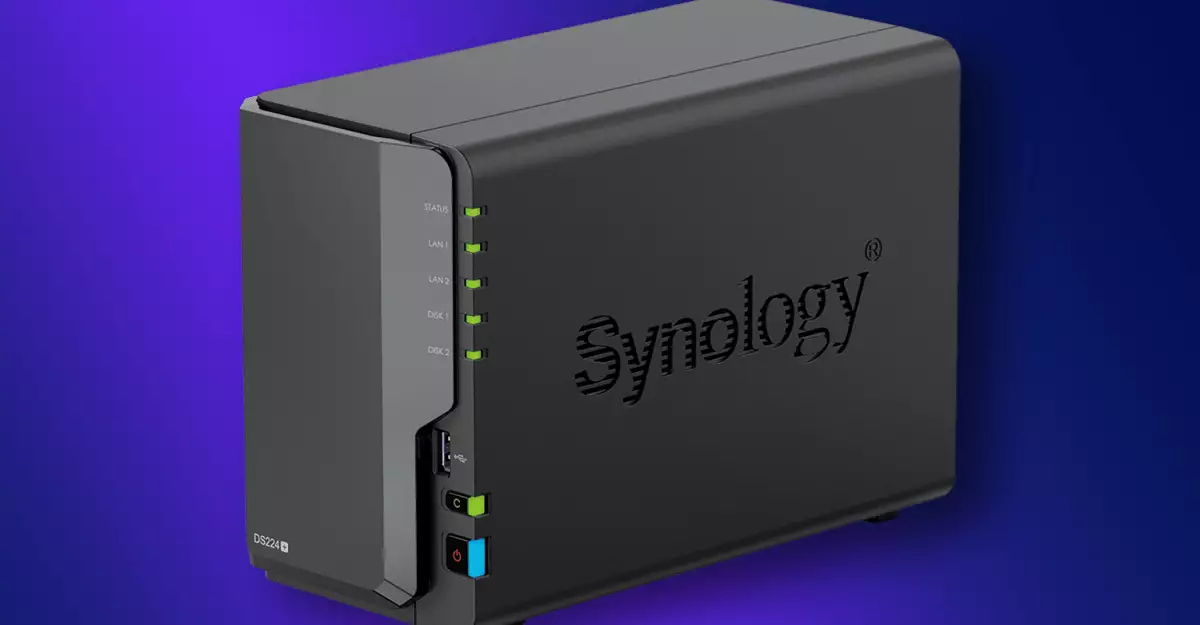Synology, a name synonymous with reliability in network-attached storage (NAS) technology, is setting the stage for a significant operational shift within the realm of third-party hard drive utilization. As companies evolve, the push for reliability often translates into stricter compatibility measures. However, the question arises: are these changes a necessary evolution in safeguarding the user experience, or are they merely a convenient way for Synology to consolidate control and market share? Beginning in 2025, Synology will implement restrictions that require users of its new Plus Series models to primarily use Synology-branded drives, along with those meeting specific certifications. This decision purportedly aims to enhance performance and reliability but stirs a sense of unease among the community of tech enthusiasts and everyday users alike.
The Expected Benefits and Emerging Concerns
According to Synology, these changes are designed around internal testing revealing that drives meeting their stringent validation processes show fewer compatibility issues and lower rates of failure. On the surface, such an assertion sounds reasonable. After all, a company that takes pride in the quality of its products certainly has a vested interest in ensuring its NAS systems work seamlessly with the drives that populate them. Nonetheless, the implications of this decision tangibly narrow the options for consumers. As someone who has dabbled in the world of NAS and personal cloud storage, I can empathize with the frustration of suddenly being handed a stick instead of a choice when customizing one’s storage system.
The restrictions will primarily affect newly launched Synology NAS systems while leaving current devices untouched. This situation creates a dichotomy, wherein existing users can continue enjoying a sense of flexibility, but future adopters may find themselves shackled by limited choices. For typical everyday use—like streamlining media access or backing up family PCs—these changes might create significant obstacles. Particularly concerning is the impact on specific features such as storage pooling, which many users have made standard components of their home setups. Even with assurances from Synology regarding compatibility lists, one can’t help but feel skeptical about the long-term ramifications of limiting hardware options.
The Market Landscape: A Double-Edged Sword
What makes this move even more contentious is the broader context of computer hardware sales. The NAS market has thrived on the ability of consumers to find alternatives and budget-friendly choices in third-party devices. By steering users toward certified components, Synology may safeguard themselves from future support fiascos, but they might inadvertently stifle healthy competition. This approach could lead to inflated drive prices and deter customers seeking cost-effective solutions. In a world where every penny counts, especially for creative professionals and families managing multiple devices, these restrictions could tip the scales toward exclusion rather than empowerment.
The rationale provided by Synology—that reducing compatibility issues may result in enhanced system reliability and performance—strikes a chord, yet it raises eyebrows. One needs to question: does this truly serve the users best, or is it merely a well-dressed excuse for bolstering the company’s profits? The sentiment appears problematic; when companies like Synology center their services around proprietary ecosystems, they often risk alienating the very community that helped propel them to success.
User Trust and the Accountability Factor
For Synology to maintain authority in the NAS space, customer trust and satisfaction must remain paramount. Drawn from my extensive experience interacting within tech communities, it is evident that users appreciate transparency from manufacturers. Synology does not seem to be exercising this transparency on this occasion, leaving users grappling with uncertainty regarding their future choices. Will they still have the ability to mix and match drives to curate specific configurations? Will the experience of their once-trusted NAS devices diminish under the weight of conformity?
The task ahead for Synology is clear: they must present a compelling case to the community, convincing users that these restrictions serve their interests rather than stifling their choices. After all, it only takes a few holes in consumer trust to create a ripple effect; one that can lead to competitors eagerly stepping in to fill the gap. In an ever-evolving tech world, it’s crucial for software and hardware providers to recognize that while innovation is key, the empowerment of users and respecting their preferences should always remain at the forefront.

